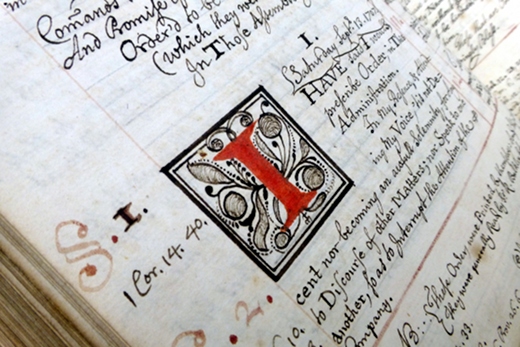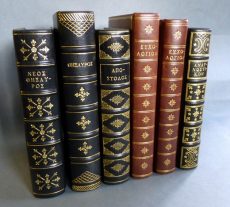- About
- Visiting
- What’s On
- Venue hire
- Catalogues
- Collections
- 101 Treasures of Chetham’s
- Digital Resources
- The Flowers of Histories
- A Book of Hours from France
- The Manchester Scrapbook
- Thomas Barritt of Manchester
- Art Treasures Examiner of 1857
- Manchester Association for Constitutional Order
- The North Western Museum of Science and Industry: Some Reminiscences by Richard Hills
- Criminal Manchester
- The Cup of Destiny
- Athenaeum Souvenir
- Middle English Manuscripts
- Manchester and Liverpool of Today
- Hollingworth’s Mancuniensis
- Memoir of Cecil Wray
- William Seward’s Diary
- The Anti-Monopolist
- Fishwick’s History of Rochdale
- Knyvett’s Defence of this Realm
- Tractatus de Nigromantia
- Axon Ballads
- Printed Books & Ephemera
- Archives & Manuscripts
- Prints and Photographs
- Blog
- Support us
Works of the French Prophets

John Lacy’s Expositions of several texts of Scripture pronounced under the operation of the Holy Spirit is part of a collection of printed books and manuscripts containing a written record of the ‘utterances’ of the French Prophets.
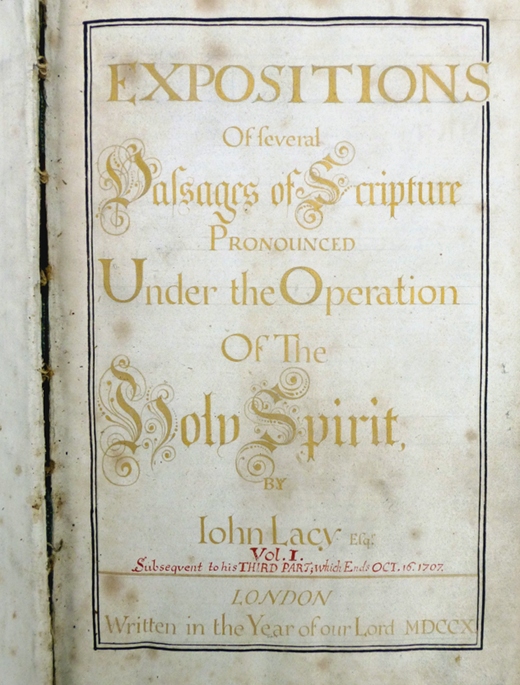
These volumes contain transcripts of trance-induced predictions of the imminent end of the world and other apocalyptic admonishments and ‘warnings’ spoken by members of an early 18th-century religious sect called the French Prophets.
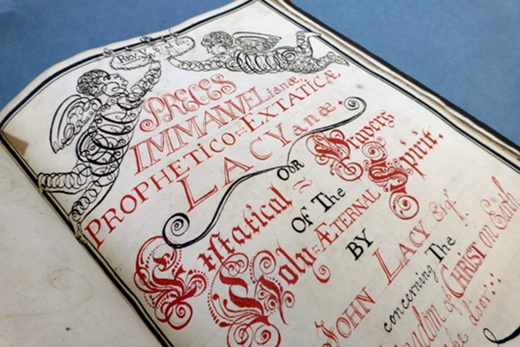
Emigrés to England from a persecuted group of Huguenots known as the Camisards, in France they were singled out for their millenarian views, their apocalyptic predictions of the end of the world, and their radical, often violent encounters with the Catholic Church and French Government. Most of them were jailed, killed, or otherwise suppressed.
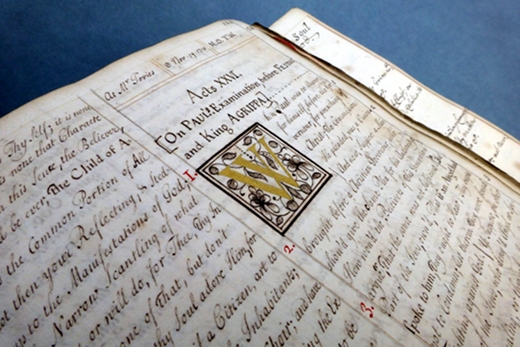
The few who escaped to London were shunned by most other Huguenots, and considered mad by many, but their end-of-the-world message gained them a small but passionate English following in the first years of the 1700s. Although a series of failed predictions and sectarian in-fighting led to their eventual demise, they left their imprint on the theology of the day; traces of their influence may be seen in the North American Shakers and the philosophy of Jean Jacques Rousseau.
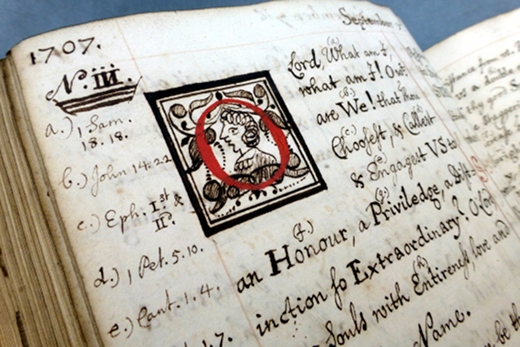
Many of the manuscript volumes of the French Prophets are beautifully transcribed, the careful handwriting a reminder of a tradition that relied upon scribal transmission rather than the printing press, but this two-volume manuscript of prophet John Lacy’s Expositions surpasses the rest.
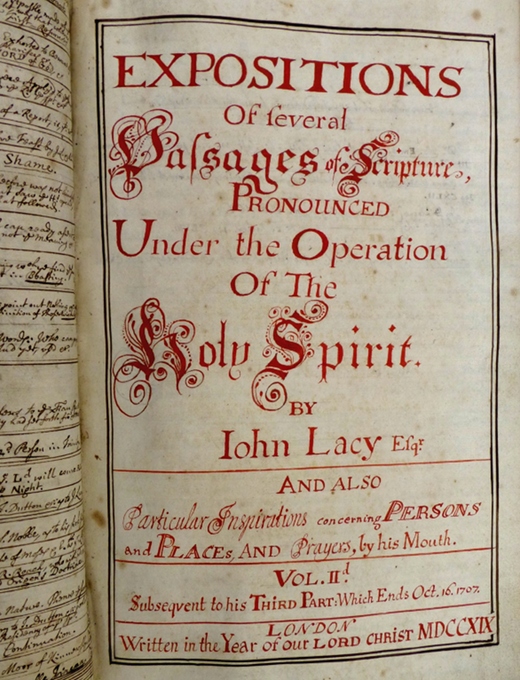
The lavish use of gold leaf, elegant two-colour initials and calligraphic embellishment show a wonderful synthesis of medieval artistry and English folk-art. These two volumes, the second of which also includes prophecies by other members of the group, were probably transcribed for the London chemist Francis Moult, one of the leaders of the group, whose initials may be represented by the FM on this leaf.

This is not a formal collection, although we suspect that many of the manuscripts found their way to the library via the collection of John Byrom, who was interested in such mystical millenarian doctrines, but as the output of a single group, they present an intriguing glimpse into late-Enlightenment religious thought.
